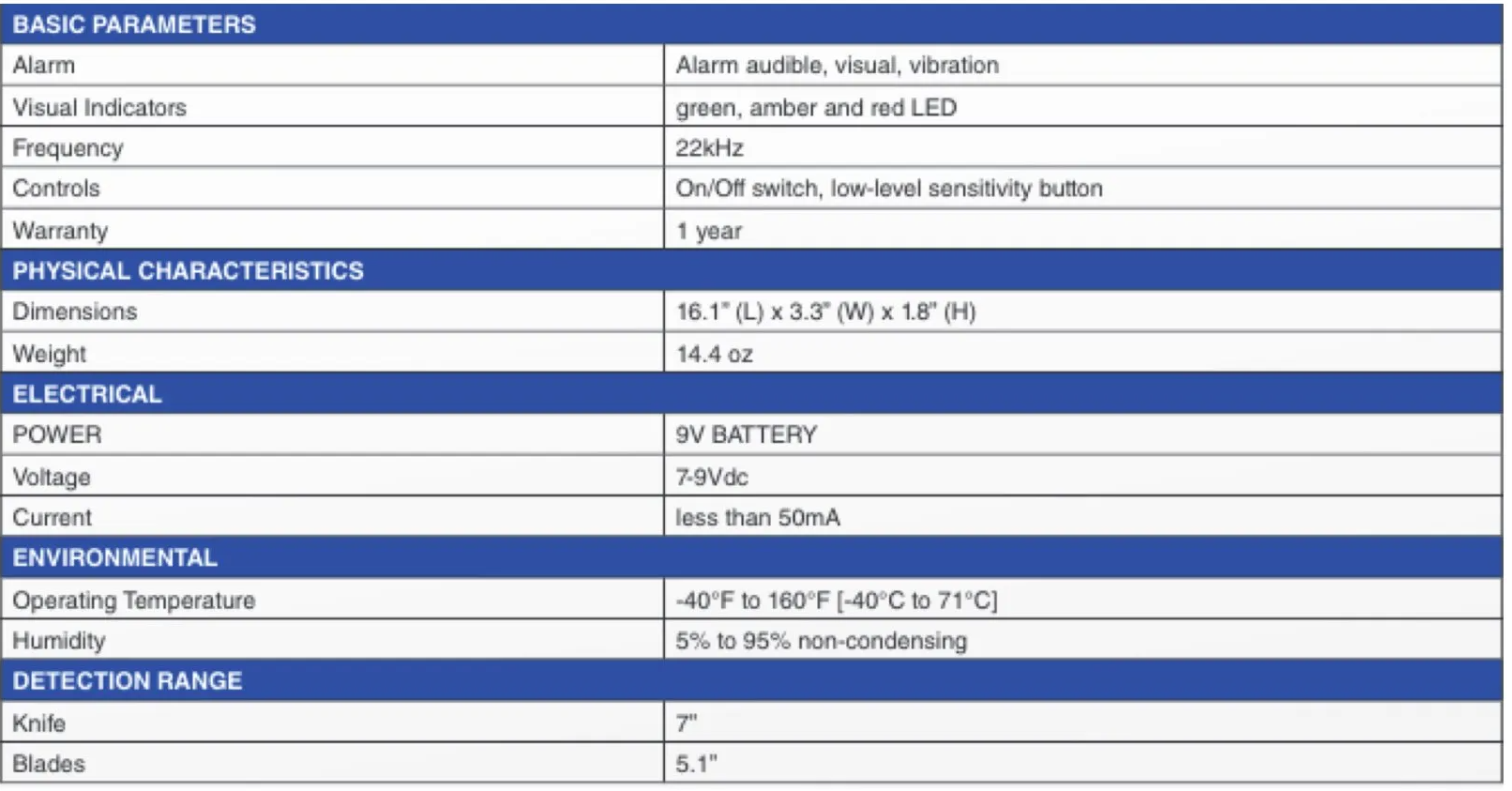Y-50 Handheld Metal Detector
Y-50
Y-50 Handheld Metal Detector
- High sensitivity, can detect ferrous metal and non-ferrous metals, simple to use, convenient, and easy to adjust.
- Easily switch between audible and vibration alarms. If hearing assistance is needed you may also use headphones.
- Last more than 40 hours under continuous use and alarms when batteries are running low.
- Can detect metal as small as a paperclip.
If you're concerned about the security of your business, handheld metal detectors are a must. These top-of-the-line devices can ensure you know exactly who (and what) is entering your property.
Considerations from Department Homeland Security
OVERVIEW
WTMDs play a specific role in security for detecting concealed weapons. Indoor, fixed systems are typically installed as checkpoints at:
- Transportation venues (e.g., airports, train, bus, ship boarding areas);
- Government buildings, including courthouses and military installations;
- Schools;
- Private buildings; and
- Prisons.
- Temporary, indoor systems may also be set up for special events.
- Outdoor WTMDs installations may be either fixed or temporary, and may be used at:
- Sporting events;
- Concerts; and
- Special events.
All people entering a venue are directed toward the WTMD and typically place their bags, coats, and metal objects in a basket for screening by an X-ray machine. One person at a time passes through the WTMD, and if an alarm sounds, the individual will generally be screened with a metal-detecting security wand.2 Thus, the WTMD is only one part of a larger security system that includes additional screening equipment, security personnel to operate the equipment, operational procedures, and a secure facility perimeter.
Those purchasing a WTMD for the first time should be aware of additional considerations:
- Placement: WTMD installation requires careful planning of layout to allow sufficient space for people waiting to be scanned and for secondary inspections after an alarm. Nearby metal structures, such as plumbing and air ducts, or nearby sources of electromagnetic energy, such as an elevator motor, can cause interference. These environmental interferences can be mitigated by properly siting the detector and adjusting the instrument sensitivity. Simultaneous operation of multiple WTMDs also requires frequency adjustments and adequate physical separation.
- Testing: New WTMDs require initial acceptance tests to verify that they detect the threats required by the facility and routine performance tests to confirm that they continue to work as expected. Both types of tests are used to optimize the sensitivity settings of the detector to minimize false positives (alarms for nonthreat items) and false negatives (failure to alarm for threat items).
- Throughput: Although manufacturers of WTMDs may specify a device throughput (i.e., number of people that can be scanned per unit time), overall throughput is affected by the experience of the operator, the arrival rate of people, the compliance and preparation of people to be scanned (e.g., removing metal items as they approach the detector), and the availability of personnel and equipment to adjudicate alarms.
Metal Detectors are used in may NYC schools.
Project WNYC Reports:
"More than 90,000 public high school students in New York City are scanned every day by metal detectors. The rate of students who are scanned varies by borough and racial demographics."
"... according to reports in the New York Post and the Daily Mail, 712 weapons were found by metal detectors in schools during the 2013-2014 school year. If every high school student currently at a scanning school was scanned each school day, that would amount to 15,964,020 scans over a school year — or one dangerous item found for about every 23,034 scans."




